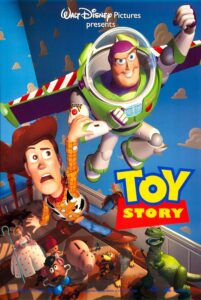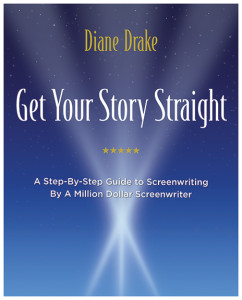
I’m currently teaching a course called “Get Your Story Straight” for the UCLA Writers Program, and one of my students recently commented on how helpful he found the connection that I emphasize between the Inciting Incident and Plot Point #1, the turning point at the end of Act One. So, fwiw, I thought I’d share a brief recap of that here.
First, a quick refresher on definitions of each element:
The Inciting Incident is the “bolt from the blue,” the curveball that the universe throws your protagonist typically about 10 pages into the story. It’s the thing that serves to upset their status quo, whatever that may be— good, bad or indifferent. It’s also sometimes referred to as “the cause for all that follows.” That is, were it not for this event, this thing which happens to your hero, none of the rest of the story would ever have happened either.
Also, it’s important to remember that, as mentioned, typically the Inciting Incident is something that happens to your hero, it’s not something they do. And finally, the Inciting Incident usually creates some sort of specific problem for them; it serves to put them somehow in motion as they attempt to deal with whatever challenge it has newly created in their life.
Plot Point #1, on the other hand, is something the hero does. This is critical. It is action they take, i.e., something they do, (not something they say), in order to somehow contend with the problem that has been created in their life by the Inciting Incident. And ideally, the more drastic this action, the better. My best definition for Plot Point #1 is as follows: “The action the hero takes to try to solve what they perceive their problem to be, which then results in unexpected consequences.”
And these two elements, which as you can see are fundamentally interconnected, or at least ought to be, are usually separated by about fifteen pages, give or take, wherein the pressure increases on the hero, ultimately catalyzing them to take action in Plot Point #1.
A few examples of these principles in action:

TOY STORY — The arrival of Buzz Lightyear (Inciting Incident) upsets Woody, the cowboy’s, status quo. Heretofore, Woody has always been little boy Andy’s favorite toy. But Buzz upstages him, both with Andy and with Andy’s other toys, further infuriating him in the pages following the Inciting Incident, to the point that at the end of Act I Woody contrives to literally get rid of him, and tries to knock Buzz behind Andy’s desk where Andy can’t find him.
This scheme then goes awry when Woody instead winds up accidentally knocking Buzz out the window, setting the stage for all sorts of comic misadventures and escapades that follow in Act II.

EVERYTHING EVERYWHERE ALL AT ONCE – This is a particularly interesting example as it’s very easy to miss the Inciting Incident. In fact, I’d argue that there is no way to even spot it until you’ve seen the movie at least once. (Spoiler alert here for anyone who hasn’t yet.)
If you watch very carefully, about ten minutes into the film, you’ll see that Waymond, who is established as the sweet, clownish, ineffectual husband of the overworked wife and mother of the family, makes a peculiar snapping motion with his head, and then proceeds to stash paper, pencil, etc. into a fanny pack. What we, and his wife don’t yet know, but will soon come to learn, is that the man is no longer her dopey husband; he’s now “Alpha Waymond” an alternate version of himself who has “universe jumped” and suddenly appeared in her harried life. So, the status quo of her entire life is about to change, even if she, and we, (certainly upon the first viewing), don’t yet know it.
Alpha Waymond, we come to learn, has been sent here to convince her that she must take on the mission of saving the entire multi-verse, something which she initially resists, but which she finally agrees to do in— you guessed it— Plot Point #1.

BARBIE – The strengths and (imho) weaknesses of this movie are a whole other conversation, but simply for our structural purposes here, the Inciting Incident is when Barbie realizes something has changed, something is amiss in her world. Suddenly she has a fleeting thought of death; then discovers she has a microscopic bit of cellulite, and worst of all, flat feet! In an effort to determine what’s happening to her, she visits “Strange Barbie” (played by Kate McKinnon) who informs her that someone playing with her in the real world is the cause and that she must venture there to fix things.
Okay, I know I said i wasn’t going to get into this, but I have to add that I think one of the weaknesses of the film is how kind of clunky this device is. I mean, in all the history of Barbie did no one ever discard a Barbie before? We’re to understand this has never, ever happened to her until now? And it’s all a bit vague, both how she’s supposed to find this person and what exactly she’s supposed to do once she does to “fix things.” Be that as it may, this is what the movie posits, however fuzzily. And it does illustrate the principles above— Inciting Incident happens to the heroine, upsets her status quo, pressure on her builds, until finally she takes some pretty drastic action at the end of Act I.
A couple more points: Generally speaking the Inciting Incident is perceived by the hero as the worst thing, or certainly one of the worst things, that could possibly befall them. But ultimately it often turns out to be the best thing, the proverbial blessing in disguise, because it winds up forcing them to change, to grow, and somehow take the reins of their life and become a more fully realized human being.
Finally, it’s interesting to note that quite often the better log lines for a film are also connected to these two elements. They often mention the thing that creates the crisis in a particular character’s life (i.e. the Inciting Incident) and allude to the first plot point, or the action the hero takes to try to deal with it. So, if you’re struggling with any of these elements, take a look at the others to see if the connections between them are truly there and solid, and if not, how they might be made more so.

